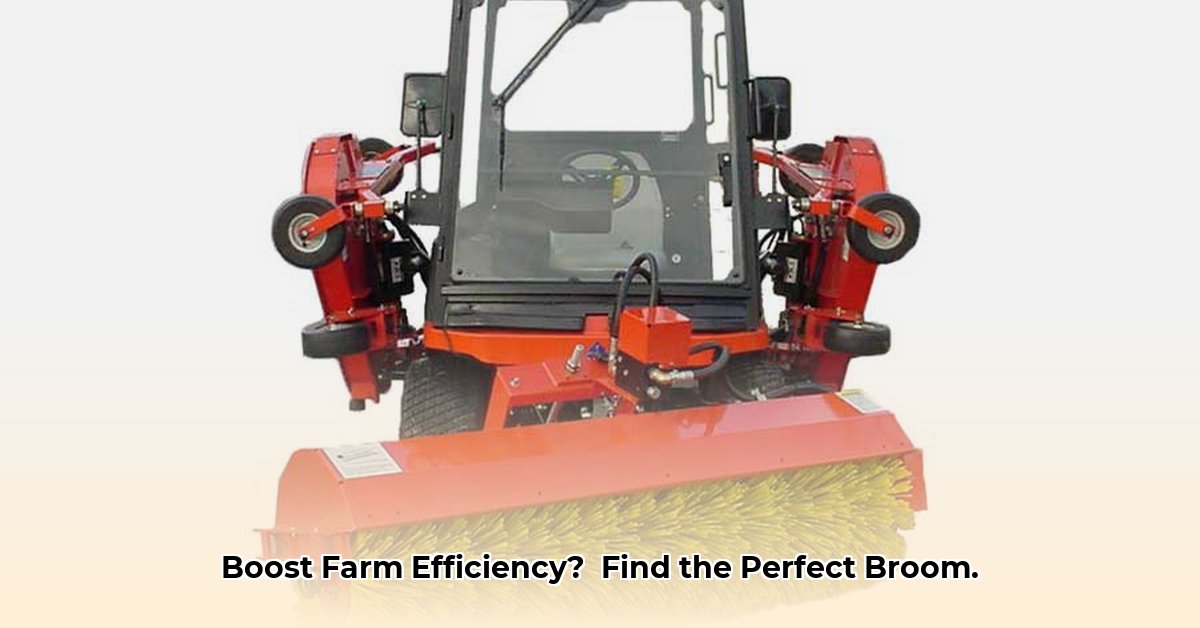
Choosing the right tractor broom significantly impacts farm efficiency and environmental sustainability. This guide details how to select, install, and maintain various tractor broom types, ensuring optimal performance and minimizing environmental impact. For more information on replacement parts, check out these tractor supply resources.
Understanding Tractor Broom Types
Two main types of tractor brooms exist: hydraulic and mechanical. Hydraulic brooms offer precise control over speed and angle via the tractor's hydraulic system, ideal for varied terrains and debris. Mechanical brooms, driven by the tractor's PTO (power take-off), are simpler, less expensive, and suitable for straightforward cleaning tasks.
| Feature | Hydraulic Broom | Mechanical Broom |
|---|---|---|
| Control | Precise, adjustable speed & angle | Fixed speed and angle |
| Initial Cost | Higher | Lower |
| Maintenance | More involved; specialized tools may be needed | Simpler; less frequent |
| Versatility | Handles various terrains and debris types | Best for specific tasks/terrain types |
| Ideal For | Demanding jobs, variable conditions | Straightforward cleaning, budget-conscious operations |
Choosing the Right Broom: A Step-by-Step Guide
Selecting the optimal broom involves careful consideration of several factors.
Step 1: Tractor Compatibility: Verify your tractor's hydraulic capacity and mounting points match the broom's specifications. Incorrect matching can lead to damage and unsafe operation.
Step 2: Terrain and Debris: Assess your typical working conditions. Heavy debris or rough terrain necessitates a robust hydraulic broom, while lighter debris on smoother surfaces allows for a more affordable mechanical broom. What are the most challenging cleanup scenarios on your farm?
Step 3: Budget: Hydraulic brooms typically cost more upfront but offer greater versatility and efficiency. Mechanical brooms provide a budget-friendly alternative for less demanding tasks. Does your budget prioritize upfront cost savings or long-term efficiency gains?
Step 4: Sweeping Width: Consider the area you need to cover. Wider brooms are faster but require more powerful tractors. What's the optimal balance between sweeping speed and your tractor's capacity?
Installation and Maintenance
Installation follows manufacturer instructions; however, regular maintenance is crucial for longevity. This includes checking bristles for wear (replacing them as needed), monitoring hydraulic fluid levels (for hydraulic brooms), lubricating moving parts, and thorough cleaning after each use. Proper maintenance can extend the lifespan of your broom by as much as 50%.
Safety Considerations
Prioritize safety when operating any tractor attachment. Always consult the manufacturer's safety manual, wear appropriate PPE (Personal Protective Equipment), clear the area of obstacles, and never leave a running tractor unattended. Farm safety is paramount— neglecting safety protocols can lead to serious injuries.
Environmental Considerations
Choose brooms with sustainable bristle materials (e.g., recycled or renewable materials) and practice responsible disposal of worn-out components. Sustainable practices minimize environmental impact and reduce long-term costs.
Conclusion: Maximizing Efficiency and Sustainability
Selecting the appropriate tractor broom optimizes farm efficiency and promotes environmental responsibility. By carefully considering all factors detailed above, farmers can make informed decisions that benefit both their operations and the environment. The right broom is an investment in a productive and sustainable future.
Resources
(This section would include links to relevant manufacturers and suppliers.)